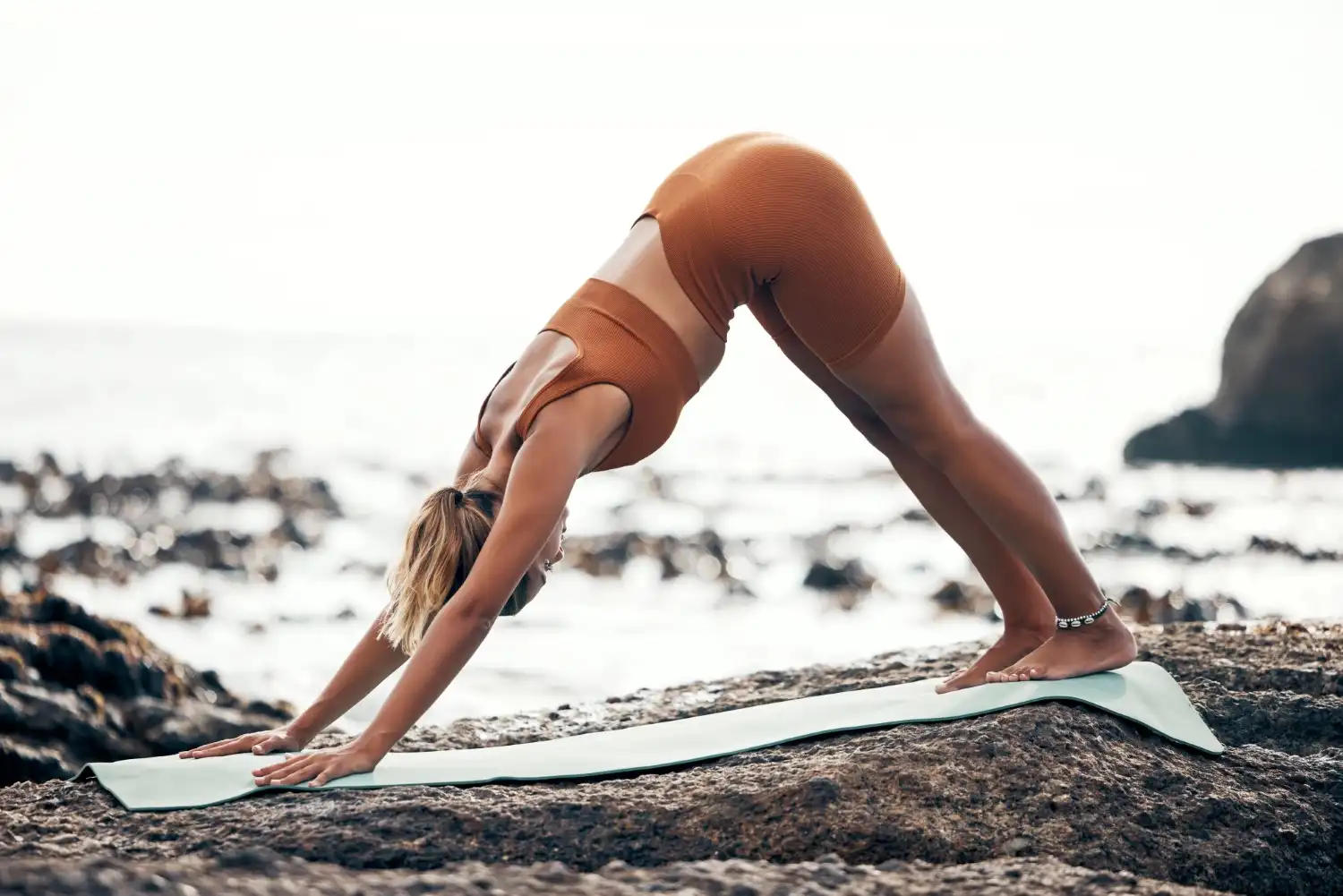Incorporating yoga into your daily routine is one of the best ways to enhance your physical and mental well-being. As both a physical therapist and yoga teacher, I’ve seen firsthand the transformative effects of a consistent yoga practice, not only for mobility and strength but also for mental clarity and stress reduction. I am a big believer in finding a fitness routine that you like, and while 60 minutes per day practice isn’t for everyone, I think most people can find a few minutes to add some simple poses to their day.

Even as a self-proclaimed yogi and lover of the practice, I am a working mom of two toddlers and have many days when I am taking the time after my kids go to bed to do a few simple postures. I have found that a few minutes has profound benefits for me in getting my mind and body on track at the end of a long day.
Whether you’re an athlete looking to improve performance, or simply seeking a way to move more comfortably in your daily life, practicing yoga daily can provide far reaching benefits.
Benefits of Practicing Yoga Every Day
1. Improved Mobility and Flexibility
One of the most immediate benefits of a regular yoga practice is improved mobility and flexibility.
Daily yoga helps combat the stiffness that comes with sedentary lifestyles, desk jobs, or overtraining. Even spending just 15 minutes each day on the mat can increase blood flow to tight areas and release tension in muscles, which can alleviate chronic pain and discomfort.
2. Strength Building and Injury Prevention
Contrary to popular belief, yoga isn’t just about flexibility. Many poses, particularly those that engage the core, legs, and upper body, build functional strength. This strength is essential for supporting the body’s natural biomechanics and reducing the risk of injury.
3. Posture Improvement
In today’s world, poor posture is rampant due to prolonged sitting and slouching in front of screens. Yoga can be a remedy. Many yoga postures specifically target the muscles that contribute to good posture, such as the erector spinae, rhomboids, and core muscles. Practicing postures daily helps open the chest, strengthen the back, and align the spine.
4. Stress Reduction and Mental Clarity
Yoga is as much a mental practice as it is a physical one. The deep breathing techniques used in yoga stimulate the parasympathetic nervous system, which promotes relaxation. A daily yoga practice is a powerful antidote to stress, anxiety, and even depression. When you pair physical movement with mindful breathing, the body begins to release endorphins, while stress hormones like cortisol decrease.
5. Improved Balance and Coordination
Yoga builds proprioception, or the body’s awareness in space, which is crucial for balance and coordination. This becomes increasingly important as we age, when falls and injuries become more common. Postures that focus on balance challenge the body’s ability to stabilize, creating better coordination over time.
Here are six essential yoga postures that I always include in my daily practice:
About the Author

Dr. Koehl is a Doctor of Physical Therapy looking to make a difference in the health and well-being of the people in her community. She loves to educate patients to empower them in taking control of their health and reaching their goals including those with acute and chronic orthopedic conditions, pelvic floor dysfunction, and neurological conditions.


